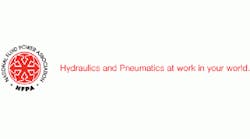- Increase the energy efficiency of fluid power components and systems;
- Improve and apply energy storage capabilities; and
- Reducie the size of fluid power components and systems.
The Market Education Challenges are to:
- Build “smart” components and systems;
- Improve the reliability of fluid power components and systems; and
- Reduce the environmental impact of fluid power components and systems.
Although the task force report suggests several market education and research and standardization initiatives to assist in addressing these challenges, it prioritizes education and the application of existing technologies and procedures in the marketplace as providing the greatest potential benefit in these areas.
The pre-competitive initiatives aligned with all six challenges comprise an agenda that can be used by organizations that wish to pursue projects of importance to the fluid power industry. NFPA will use the updated agenda to continue shaping and directing the research efforts of the NFPA Education & Technology Foundation and the CCEFP. With the addition of proposed standardization projects, NFPA will also use the agenda to propose activities for ISO Technical Committee 131, the U.S. Technical Advisory Group to that Committee, and other ISO Technical Committees associated with key end-use industries. With the addition of proposed market education projects, NFPA will also use the agenda to shape and direct a number of educational programs, including the Energy Efficient Hydraulics and Pneumatics Conference, now known as the Fluid Power Systems Conference, and the IFPE Technical Conference. It will also use the agenda as a vehicle by which to attract and organize additional funding for the projects and initiatives it describes.
The full task force report can be downloaded here. There is no cost, but a brief registration process is required.
For more information contact Eric Lanke at [email protected] or call (414) 778-3351.


